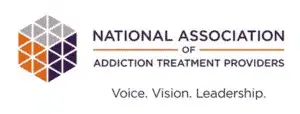The length of time oxycodone stays in your system varies from person to person based on individual factors. There are a few reasons to wonder how long oxycodone stays in your system. One of the common reasons is due to safety: if a dose is taken before a previous dose has fully left the system, there is an increased potential for an overdose to occur. Another reason is that people are getting ready for a drug screening and wondering if the tests detect previously consumed oxycodone.
How Does Oxycodone Work?
Oxycodone affects the brain and central nervous system. When someone takes oxycodone, it activates opioid receptors in the central nervous system. This process changes how the brain senses and emotionally responds to pain. Oxycodone causes a slow down of the central nervous system, which controls important functions including heart rate and breathing. If someone uses a dose of oxycodone that’s more than their central nervous system can handle, the slowdown effect may lead to an overdose or death.
When someone takes oxycodone, it increases the levels of dopamine in the brain. The dopamine boost from oxycodone is one reason it’s addictive. Dopamine can create pleasurable feelings or a euphoric high, which can trigger the brain’s reward cycle and lead to addiction.
What is the Half-Life of Oxycodone?
The half-life of a drug refers to how long it takes a dose to reduce by half in the bloodstream. After one half-life, the concentration of a drug will be half the original dose. So, what’s the half-life of oxycodone? The half-life of oxycodone is on average around 3.5 to 5.5 hours. It takes several half-lives for a drug to be fully eliminated from the system. Within 20 hours, an average person’s body may have no oxycodone left in it.
This Season, Give Yourself the Gift of a Fresh Start.
Whether you are struggling with addiction, mental health or both, our expert team is here to guide you every step of the way. Don’t wait— reach out today to take the first step toward taking control of your life.
However, oxycodone leaves behind metabolites that linger after the drug leaves the system. Some drug tests can detect metabolites, so the use of oxycodone may be detectable for longer than 20 hours.
Speed of Metabolism
The speed of metabolism for oxycodone depends on factors like an individual’s metabolism, overall health, and kidney and liver function can play a role in the metabolism rate.
How is oxycodone metabolized? When someone takes a dose of oxycodone, the liver breaks it into noroxycodone, noroxymorphone and oxymorphone. Then these substances are excreted via the kidneysthrough urine. Some oxycodone excreates through sweat.
So based on the half-life and the speed of metabolism for oxycodone, how long can it show up in a drug screening? In a urine test oxycodone may be detectable for three to four days after use. In a blood test, detection times may be up to 24 hours, and in a saliva test, detection times usually range from one to four days.
Get Help for Oxycodone Addiction
Are you struggling with an oxycodone addiction? If so, you aren’t alone. While the drug can feel like it’s taking over your life, addiction treatment can help you attain a healthier future. Contact The Recovery Village at Palmer Lake, and speak to a representative about how treatment plans cater to each patient’s individual needs.









